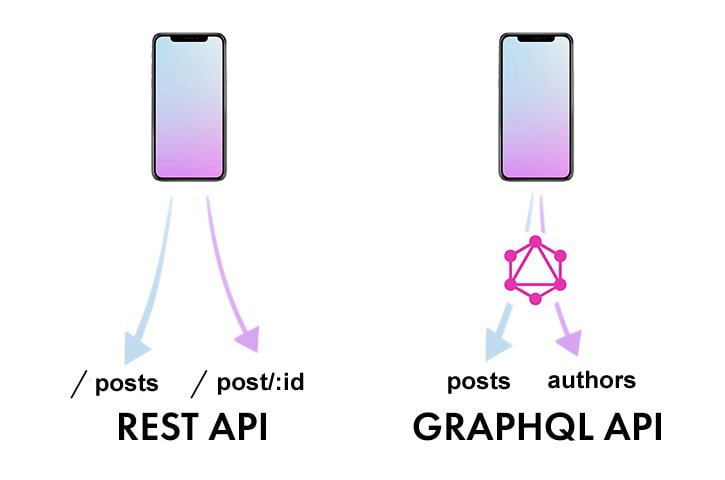GraphQL: The Go-To for Getting Data, and It’s Going to Get Significantly Greater in 2024!
Graph QL has caught a huge market in the field of data fetching and committed publicity upsticks in 2024. It is coming in 2024 to energize changes! GraphQL, the data dynamo, is getting significantly more well-known and bringing bunches of cool novel thoughts! Prepare for a few major overhauls!
The joining of ReactJS and GraphQL has become a powerful tool in the consistently advancing scene of front-end improvement, where data is the soul of users. The consolidation of ReactJS and GraphQL in 2024 presents developers hoping to further develop their data-getting abilities with a thrilling and open door. We should start a trek to unveil how ever-growing GraphQL and ReactJS will fundamentally have an impact on how we recover and oversee data in upcoming years.
How Can ReactJS Amplify Its Capabilities with the Empowering Force of GraphQL?
1. Impactful Data Getting
The ReactJS web development services can embrace a revelatory way to deal with data thanks to the consistent joining of GraphQL into ReactJS. There will be no more data for under-getting; GraphQL draws in designers to decide the particular data expected for a section, streamlining the cooperation, and further developing application execution.
2. Easy Part-Level data
React parts become data-bringing maestros when matched with GraphQL. Every part can autonomously announce its data prerequisites, cultivating measured quality and reusability. The outcome? Easy part-level data for the executives, where each piece of the UI brings unequivocally what it needs.
3. Continuous Updates with Memberships
In this period of momentary delight, ReactJS and GraphQL combine efforts to carry ongoing updates to the front. GraphQL memberships permit engineers to get constant data refreshes when they happen on the server, prompting a more unique and responsive client experience.
Remaining Ahead in 2024: Key Patterns to Watch

- Diagram Sewing for Bound together APIs
As we dig into 2024, GraphQl sewing arises as a pattern to watch. This procedure empowers the production of brought-together APIs by sewing together numerous GraphQL patterns. React engineers can tackle this capacity to flawlessly coordinate assorted data sources and improve complex data fetching situations.
- Streamlining Execution with Programmed Persevered Questions
Execution is fundamental, and in 2024, programmed persevered questions (APQ) will become the overwhelming focus. GraphQL’s APQ enhances data by reducing the size of questions sent throughout the organization. ReactJS designers can anticipate upgraded execution and speedier stacking times for their applications.
- Safety efforts with GraphQL Approval
Security stays a top concern, and GraphQL answers with approval components. In 2024, ReactJS web development services can execute powerful safety efforts by utilizing GraphQL’s fine-grained approval capacities. This guarantees that the main approved clients access explicit data, bracing applications against possible weaknesses.
Creating What’s to Come:
The symbiotic relationship between ReactJS and GraphQL promises a paradigm shift in how we approach data fetching as we look into the future. With the component-based architecture of ReactJS and the flexibility of GraphQL, developers can create applications that are not only efficient but also prepared for the unpredictable demands of the future.
5 Signs Why You Need A NodeJS Partner To Generate Better RO
Here are some advantages to choose the right NodeJS partner and generate better ROI. Choosing a perfect NodeJS outsourcing partner will help your business growing.
Top Trends You Must Watch Out in 2024
The symbiotic relationship between ReactJS and GraphQL promises a paradigm shift in how we approach data fetching as we look into the future. With the component-based architecture of ReactJS and the flexibility of GraphQL, developers can create applications that are not only efficient but also prepared for the unpredictable demands of the future.
- Expanded Popularity Among Organizations:
As applications fill in intricacy and scale, GraphQL Organization is emerging as a key pattern. Teams and services can collaborate seamlessly between themselves and each other thanks to this strategy, which makes it easier for businesses to manage distributed data.
- Serverless Computing with GraphQL:
The cooperative energy of ReactJS and GraphQL adjusts well to the serverless registration worldview. Serverless architectures based on GraphQL are expected to grow in popularity in the not-too-distant future. These architectures promise improved scalability, less infrastructure management, and cost-effective solutions.
- Mix with Arising Advancements:
The Internet of Things (IoT), augmented reality (AR), and virtual reality (VR) are all likely to work seamlessly with ReactJS and GraphQL. Developers will be able to create multi platform, immersive, and interconnected experiences thanks to this integration.
- Real-Time Collaboration:
Expanding on GraphQL’s membership capacities, the future will observe an expanded spotlight on constant cooperation highlights. Applications will use GraphQL memberships to convey live updates, work with intuition, and draw in client encounters.
- Better State Management:
In situations where complex data interactions are involved, state management in ReactJS applications will advance. Developers will have access to more robust state management solutions as a result of further refinement of GraphQL’s component-level data management capabilities.
- Advancements for Mobile Turn of Events:
With the ReactJS web development services versatile applications, ReactJS and GraphQL will keep on enhancing their joint effort for mobile app development. This incorporates upgraded execution, improved reserving systems, and a consistent advancement experience across various portable stages.
- Tooling and Developer Experience:
The ReactJS and GraphQL environments will observe a flood in tooling upgrades and enhancements in engineer insight. This will improve complex work processes and give more complete documentation and proposition devices to smooth out investigating and execution streamlining.
- AI and machine learning join hands:
As machine learning and AI innovations become more pervasive, ReactJS and GraphQL will probably incorporate these abilities consistently. In AI-driven applications, developers can anticipate utilizing GraphQL for effective data interactions.
- GraphQL Beyond the Web:
The flexibility of GraphQL reaches beyond conventional web applications. Later on, we can predict GraphQL being utilized in different settings, including work area applications, serverless capabilities, and, surprisingly, implanted frameworks.
- Improved Safety efforts:
The future will welcome an increased spotlight on safety efforts inside GraphQL and ReactJS applications. Advancements in validation and approval systems will guarantee that delicate information stays secure and safeguarded.
Hoisting ReactJS and GraphQL Collaboration: Navigating Milestones and Charting Improvements for 2024
As we walk into 2024, the joint effort between ReactJS and GraphQL keeps on characterizing present-day web advancement. While this association brings gigantic advantages, recognizing regions for development and enhancement is urgent. How about we investigate key angles ready for height in the approaching year:
- Smoothing out GraphQL Question Intricacy:
Improving instruments and practices for overseeing complex GraphQL inquiries. Smoothing out and streamlining question designs to guarantee proficiency and viability.
- Expanded GraphQL Security Conventions:
Supporting safety efforts inside GraphQL executions. putting in place cutting-edge authentication and authorization protocols to protect applications from potential flaws.
- Worked on Learning Ways for Designers:
Smoothing out the expectation to absorb information for engineers new to GraphQL. introducing resources, tutorials, and documentation that are easier to find in order to speed up the onboarding process.
- Mechanizing GraphQL Execution Checking:
Presenting computerized apparatuses for checking and enhancing GraphQL execution. Carrying out highlights that recognize bottlenecks and recommend enhancements, guaranteeing applications run consistently.
- Upgraded Record Transfer Dealing with
Disentangling and further developing document transfer components in GraphQL. Growing more easy-to-use answers for taking care of record transfers inside GraphQL-fueled applications.
Conclusion:
In 2024 and then some, dominating GraphQL for ReactJS isn’t just about getting data; it’s tied in with architecting dynamic, responsive, and future-prepared applications. As the team keeps on advancing, ReactJS engineers have the absolutely exhilarating open door to use the consolidated force of these innovations, opening additional opportunities and making way for the following time of data-driven development. Prepare to ride the wave of synergy between ReactJS and GraphQL, where the possibilities for the future of data fetching are endless!





